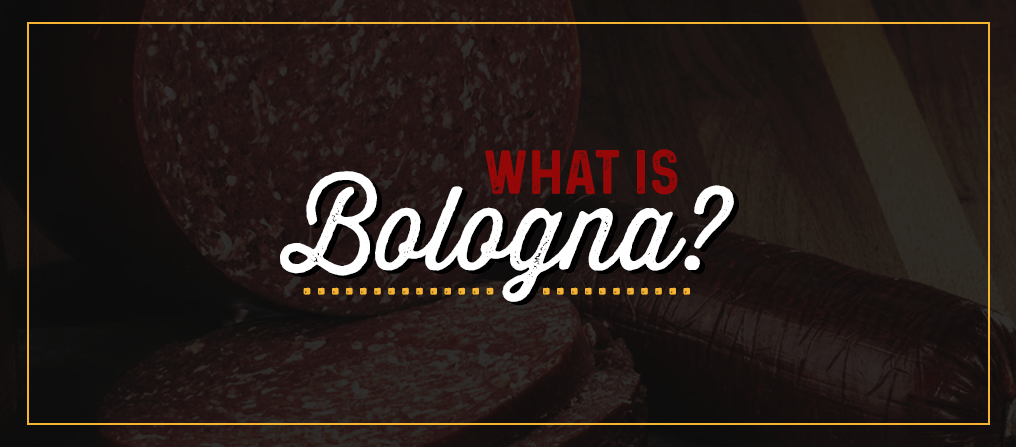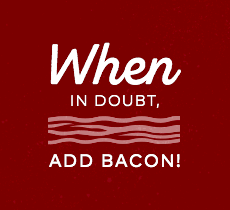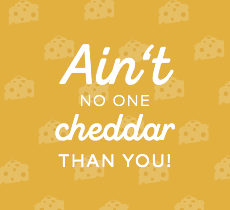
What comes to mind when you think of bologna? Maybe it’s the iconic bologna sandwich on white bread with a tall glass of iced tea, or perhaps it’s a delicious slice of sweet Lebanon bologna and cheddar cheese on a cracker.
Regardless of what you thought you knew about this classic lunch meat, it’s time to expand your horizons. We at S. Clyde Weaver know this lunchtime treat inside and out, and we’ll take you on a journey through its fascinating history. Let’s dive in!
The History of Bologna: Where Does Bologna Come From?

Bologna may seem like a quintessentially American lunch meat, but its origins trace back to Italy and even to ancient Rome. Romans enjoyed a type of salt-cured sausage that received its distinctive flavor from myrtle berries — a spice you’ll still find in many types of bologna today. One image from ancient Rome shows a person preparing this sausage by mixing meat and spices using a mortar.
While there is little information available about this early bologna, we do know that the modern American version is a direct descendant of mortadella, a sausage originating from the Northern Italian city of Bologna. The name “mortadella” is a combination of the Latin words for “myrtle” and “mortar,” which refer to:
- Myrtle: Myrtle berry is the signature spice used to flavor bologna.
- Mortar: A Roman sausage maker would use a mortar and pestle to grind the meat and mix the ingredients together.
Of course, the American term “bologna” — or the phonetic spelling “baloney” — directly references this famous sausage’s city of origin.
Mortadella was already a celebrated regional delicacy in Europe in the Middle Ages, and it continues to be the city’s culinary claim to fame. While this early bologna was initially a food for the rich and powerful, it’s a resourceful way of creating something delicious with remaining pork trimmings, and curing it allows it to last — a crucial benefit before refrigeration became common.
How Mortadella Became Bologna
Considering how popular mortadella was in Europe, it’s no wonder the sausage caught on quickly in America, as well. Nineteenth-century Italian immigrants brought their culinary heritage with them, and the signature sausage found its way into American delicatessen shops. Not surprisingly, we Americans put our unique twist on the Italian favorite.
When most Americans think of bologna, they likely picture Oscar Mayer bologna in its signature red containers. Oscar Mayer was a German-American largely credited with Americanizing bologna on a commercial scale. Americans came to know bologna as an economical lunch meat with a smooth, consistent texture. The flavorings may differ somewhat from mortadella, but some of the signature spices are still there.
The United States Department of Agriculture (USDA) also played a large role in this change. In the federal Standards of Identity, the USDA categorizes bologna as a frankfurter — the same classification as hot dogs, bratwurst or any other cooked sausage. Frankfurters are subject to strict processing regulations, including:
- Comminution: This process breaks all bologna ingredients down into tiny particles, creating a smooth and consistent paste.
- Fat content: The maximum allowable fat content for frankfurters of any kind is 30%.
- Water content: While producers can use water, ice or both to mix the curing ingredients, the finished product’s composition cannot exceed 40% water and fat.
- Labeling: The producer must clearly disclose all ingredients used in their product on the label. Similarly, if a bologna only contains one type of meat, the label must say so.

While many Americans are most familiar with this type of bologna, companies like S. Clyde Weaver still create authentic bologna styles that are more akin to the Italian and early American versions. The main difference in these artisanal bolognas is in the quality of ingredients and the curing methods.
Bologna vs. Baloney: What’s the Difference?
Another fascinating fact about the word “baloney” in America is that it became a slang term for something nonsensical or fraudulent. A similar word is “malarkey.”
So then, why did we start associating this delicious lunch meat with nonsense? The answer isn’t clear. One theory is that this pronunciation came from the Irish word “blarney,” another slang term for nonsense. Other linguists believe it came from the Americanization of the Italian city’s name — for example, “Italia” changed to “Italy” in English. The subtle “ia” sound at the end of “Bologna” could have gradually morphed into an -ey, if this is the case. What we do know is that Alfred E. Smith, a politician and governor of New York, popularized the phrase in the 1930s when he used it to criticize bureaucracy in Washington.
This slang term has stuck around in American vocabulary, but it wasn’t the first creative use of the word. In the 1920s, “baloney” was another way to describe an inexperienced boxer.
What Is Bologna Made Out Of?
So, what is in bologna? Even people who consider themselves fans of this iconic sausage may not know much about what goes into it.
Bologna often gets a bad rap for being “mystery meat,” but the truth is far from mysterious. This reputation mainly comes from the fact that bologna meat has historically included offal — typically organ meats like livers and hearts — that may not make it into other products.
While organ meats can actually be good sources of key nutrients, many people feel relieved to know that many bologna recipes don’t include them. Artisanal bologna, for example, usually sticks to higher-quality cuts of meat.

The ingredients in bologna can vary widely, but you can expect to see some staples in most bologna recipes:
- Meat: Ground meat is the main ingredient in any bologna recipe and can include any combination of pork, beef, chicken and turkey — or only one of those meats. You can even find bologna made of venison or other game meat. Higher-end bolognas include high-quality cuts of meat, while more affordable grocery store varieties may incorporate lower-quality trimmings labeled as “variety meats” or “byproducts.”
- Fat: As with any sausage, fat is also an essential ingredient that adds to bologna’s flavor and texture.
- Water: Most bologna varieties contain a good deal of moisture, thanks to the addition of water or stock. The liquid, meat and fat blend to create an emulsified mixture.
- Pickling spices: Various bologna recipes have unique flavor combinations, but some of the most common bologna seasonings are traditional pickling spices such as black pepper, nutmeg, allspice, celery seed and coriander.
- Myrtle berry: Another flavoring spice, myrtle berry is essential for achieving that characteristic bologna taste. This berry is indigenous to the Mediterranean and has a bitter, spicy flavor profile that includes hints of citrus, juniper and rosemary.
- Sugar: Most bologna ingredient lists also include a sweetener, such as white or brown sugar or, in some cases, corn syrup. In addition to deepening the flavor, the sweetener can also serve as a preservative.
- Cure: Bologna also needs preservatives such as salt or chemicals to turn it into a cured meat product. While smoking is another way to preserve the meat, many store-bought varieties use liquid smoke instead.
The Different Types of Bologna
Bologna sausage comes in various types. You’ll find some bologna labeled according to the type of meat included if it is not a blend. For example, you may see beef bologna alongside original bologna at the store. Beyond these fundamental distinctions, you’ll find signature varieties of bologna in America and in other parts of the world.
Let’s look at some of the common bologna types.
Mortadella
Mortadella is the original bologna. While it’s widely available in Italy today, it only recently became legal again in the United States after a decades-long ban intended to protect consumers from African swine fever.
This sausage includes finely ground pork, fat, wine, pistachios and a spice blend that differs from recipe to recipe. Some traditional recipes contain myrtle berries, while others use only salt and pepper. The cubed fat in mortadella does not get blended in, so unlike American bologna, mortadella has a mottled appearance when cut. With each slice, you should see pieces of fat, pistachios and peppercorns.
Italians take their sausage seriously, and mortadella distinguishes itself from other well-known Italian sausages like prosciutto or salami in that it’s moist instead of dry-cured. This texture comes from a slow cooking process that ends with the sausage maker spraying the mortadella with water to add moisture.
Additionally, to earn the official Mortadella di Bologna label, sausage makers must adhere to specific guidelines. For example, the sausage must have a pork-to-fat ratio of 7-to-3, and each slice should have evenly distributed pieces of fat.
German Bologna
Germany is another country we need to visit on our world bologna tour. So, what is German bologna, beyond being bologna made in Germany? This variety of meat is famous for its strong garlic flavor, which is typically the result of adding garlic cloves or powder to the recipe.
Germans call this signature bologna Fleischwurst. In the U.S., you may find this style of bologna labeled garlic bologna or garlic ring bologna.
Many Germans also enjoy mortadella — or Italienische Mortadella, as they call it. In fact, it’s one of the most popular types of bologna among Germans.
Polony
Some countries — including the United Kingdom, Ireland, Australia, New Zealand and South Africa — refer to bologna as polony. Like other styles of bologna, polony is typically a smoked meat made from pork and beef. It comes wrapped in a bright red or orange skin, so you can easily spot it in international grocery stores. You may also be able to find halal and kosher varieties made from lamb, chicken or veal.
The most traditional way to serve polony is as cold cuts, similar to American bologna. New Zealanders can also purchase polony as small cocktail sausages, which they serve boiled.
Lebanon Bologna
Another popular variety of bologna is Lebanon bologna. This bologna doesn’t get its name from the Western Asian country, so what is Lebanon bologna? It takes its name from Lebanon County, Pennsylvania. The Pennsylvania Dutch typically make this sausage with aged beef and spices like black pepper, white pepper, mace and nutmeg, then smoke it. Lebanon bologna’s flavor profile is smoky and tart. It is a semi-dry sausage, meaning it’s more akin to summer sausage than bologna most Americans are likely used to.
Lebanon bologna is a beloved treat throughout Southeast Pennsylvania. In fact, Lebanon County is so enthusiastic about its signature sausage that the county drops a giant bologna rather than a crystal-covered ball to ring in the New Year.
And the love for Lebanon bologna extends beyond the Keystone State — the small town of Yale, Michigan, holds an annual three-day bologna festival that draws crowds of more than 20,000 people. From hosting a street parade to crowning the Bologna King and Queen, this festival serves as a testament to Lebanon bologna’s delicious legacy.
Ring Bologna
Ring bologna usually comes in a narrow casing, and curves into a semicircle, which is how it got the name ring bologna. As a result, it looks more similar to a smoked sausage than a sandwich meat. A narrower diameter also allows for a more intense smoky flavor, since the smoke permeates the meat more thoroughly.
This smaller size makes ring bologna an excellent choice for snacking with cheese and crackers or including on a charcuterie board. Rather than buying ring bologna in slices, you’ll typically find it sold in whole links, so you can either slice it or cut it into chunks. You can also find ring bologna sold pickled in bottles.
Rag Bologna
Rag bologna is native to West Tennessee, and it’s hard to find in other parts of the country unless you go to a specialty store. Rag bologna gets its name from the fact that it traditionally came wrapped in cloth. This variety of bologna contains a higher level of fat and more filler than other bologna, making it even more economical for early farmers looking for ways to produce as much food as possible from each hog they butchered.
Rag bologna tends to have a saltier flavor and softer texture than other types due to its higher fat content and fillers. Some common fillers you might find in rag bologna include:
- Flour
- Cereal grains
- Milk solids
- Lard
- Soy protein
Another unique thing about rag bologna is that sausage makers soak it in lactic acid and then dip it in paraffin wax. Tennesseans and others typically enjoy rag bologna on sandwiches or smoked and barbecued. It’s also quite tasty when sliced and served on a cracker with cheese.
Sweet Bologna
Although bologna’s primary flavor profile is typically savory, most varieties will feature some degree of sweetness due to the small amount of sugar added during production. Sweet bologna is an exception to this rule — as the name implies, this style of bologna features a predominantly sweet flavor. Depending on the brand, it may also be harder and darker than other bologna, with a texture more similar to salami than soft deli meat.
Sometimes, you’ll see Lebanon bologna labeled as sweet bologna. You may also see farm-style sweet bologna that has a tangy flavor similar to Lebanon bologna. On the other hand, old-fashioned sweet bologna does not have an acidic quality — it’s all sweet and smoky, which perfectly fits some bologna lovers’ tastes.
How Do People Make Bologna?
There are various methods for preparing bologna. Let’s look at an example sequence of steps most sausage makers and factories use to create this meat.
- Blending ingredients: Bologna makers start with finely minced or ground meat. American bologna producers often process the meat until it is exceptionally smooth. Machine mixers blend the processed meat with fat, spices and water. Then, each artisan or manufacturer puts their signature touch on the bologna’s flavor profile by using a unique combination of ingredients.
- Filling casings: As with most other types of sausage, the mixture of meat now goes into casings — which were traditionally made from animal intestines. While some butchers still use intestines, most bologna manufacturers have switched to artificial casings such as collagen or plastic. Larger slices typically come in round or cylindrical casings with a wide diameter, and ring bologna often comes in long, narrow containers.
- Cooking and preserving: Because the bologna is raw at this point, the manufacturer needs to cook and preserve it somehow. Some people merely heat bologna through to cook it. Artisanal bologna may go into a smoker, which both cooks and adds to the preservation of bologna. Some cooked bologna goes through a pickling process, meaning the manufacturer places small bologna links in a jar with vinegar and pickling spices. Once sealed, the container has a remarkable shelf life.
- Slicing and packaging: Larger bologna sausages not sold whole have another step left in the process. They must get sectioned off, then they go through a machine that cuts even slices of bologna. The equal stacks of slices then go into individual packages for sale in grocery stores.
8 Ways to Prepare and Eat Bologna

Bologna comes precooked, so you can eat it straight out of the package. But why stop there when there are so many delicious dishes you can make with it?
From snacks to main courses, let’s look at some of the most popular methods of preparing and enjoying bologna in America.
1. Classic Cold-Cut Sandwich
The cold deli sandwich is the quintessential bologna meal. There may be nothing more American than a thick slice of bologna between two pieces of white bread. Add a slathering of mayonnaise, cheese, some lettuce and a juicy piece of tomato, and you have yourself the perfect lunchtime treat. Cold sandwiches are especially popular in the summer, when people are less interested in hot food or want a brown-bag lunch to take to the beach or on a picnic.
2. Fried Bologna Sandwich
Just as iconic as the cold-cut is the fried bologna sandwich. This sandwich is especially beloved at diners and in homes in the Midwest, Appalachia and the South. As with the classic cold-cut sandwich, it usually features white bread and simple condiments like mayonnaise or mustard. To make this sandwich, you place bologna slices on a hot skillet to heat them through and let them start to brown on both sides.
3. Bologna Salad
Bologna salad is similar to ham salad and is a favorite sandwich spread for many Americans. You may find this sandwich spread sold at deli counters, but some cooks make a homemade version. You start with finely chopped bologna, which you can achieve by placing chunks in a food processor or chopper. Then, stir in mayonnaise or dressing and other add-ins like chopped boiled eggs, pickle relish and seasonings and mix well. Bologna salad makes a tasty snack with crackers or a hearty sandwich filling.
4. Bologna Breakfast Cups
As more Americans are looking for ways to enjoy the foods they love with fewer carbs, breakfast — with its toast, pancakes, waffles and muffins — can be a challenge. However, one delicious low-carb recipe uses bologna as a cup to hold eggs and other ingredients of your choice. All you have to do is fold thin slices of bologna into the cups on a muffin pan, crack eggs in, add some cheese or seasonings, and let them bake in the oven. Some people also enjoy a simple pan-fried slice of bologna with breakfast.
5. Pasta Salad
Quality bologna, like the varieties you’ll find in S. Clyde Weaver’s shop, is also worthy of inclusion in any dish where you may use other types of semi-dry sausages like salami. For instance, you can chop up bologna and sprinkle chunks into a pasta salad to provide delicious flavor and delightful texture. Add in some cubed or shredded cheese, cut vegetables and your favorite dressing, and you have a flavorful cold pasta salad perfect for summer entertaining.
6. Charcuterie Board
Another elevated way to enjoy bologna is alongside other meats on a charcuterie board. Following some basic principles, you can make a charcuterie board that is sure to wow your guests, whether you’re having a casual get-together or a more formal dinner party.

Now, while bologna makes excellent charcuterie meat, you’ll want to opt for artisanal bologna over its mass-produced sandwich-style counterpart. You can slice or cube this bologna and place it alongside complementary cheeses, such as:
- Aged cheddar
- Havarti
- Brie
- Smoked gouda
Be sure to add some bread or crackers to your spread so you can combine the meat and cheese into bite-sized layers of flavor.
7. Bologna Burgers
Shake up your usual backyard barbecue with savory, smoky bologna burgers. Thick slices of the bologna of your choice make a uniquely hearty substitute for traditional burger patties — just cut the meat to your liking and pan-fry or grill until lightly charred. Top with a homemade pimento cheese sauce and serve with potato salad for a sandwich that’s out of this world!
8. Sweet Bologna Pinwheels
All you need to make these sweet-and-savory roll-ups is your favorite sweet bologna and spreadable cream cheese. For each roll, take a slice of bologna and gently spread the cream cheese on top, making sure to create an even coating. Then, roll the slice up so the cream cheese stays on the inside and secure with a toothpick. You can add these rolls to a charcuterie board, serve them as an appetizer or enjoy them as a high-protein snack — the possibilities are endless.
Delicious Smoked Bologna From S. Clyde Weaver
If you’re looking for a bologna that’s on a whole new level, S. Clyde Weaver has you covered. We use traditional methods and the highest-quality ingredients to achieve a signature smoky-sweet flavor perfect for classic sandwiches, bold charcuterie boards and high-protein snacks.
We offer several different varieties with unique flavor profiles, so you have plenty of delicious options to choose from. Check out our online store to find your new favorite, and feel free to browse our full selection of meats, cheeses and other Pennsylvania Dutch delicacies such as our delicious sand tarts.














Thank you bologna is unsung hero
Two slices of hearty white or Italian bread (toasted or not), one fried egg (broken yoke, not scrambled) and two or three slices of fried bologna … heaven…
How long does Rag Bologna last unopened in the refrigerator? How long opened?
One of my favorite sandwiches is a BLT ( Bologna,Lettuce,Tomato). Another is a grilled Bologna/Cheese sandwich.
I have a new found taste for good bologna
Now I consider myself a bolognologist. Thank you for the confering upon me this glorious wisdom!
I have thoroughly enjoyed reading about the history and origins of bologna. I also enjoy the different recipes. Thanks for sharing.